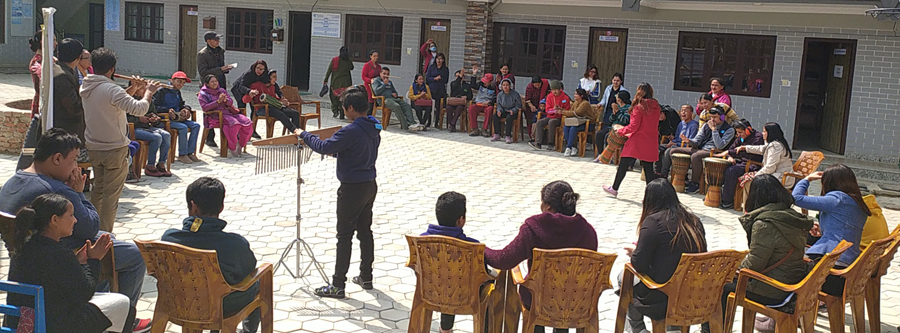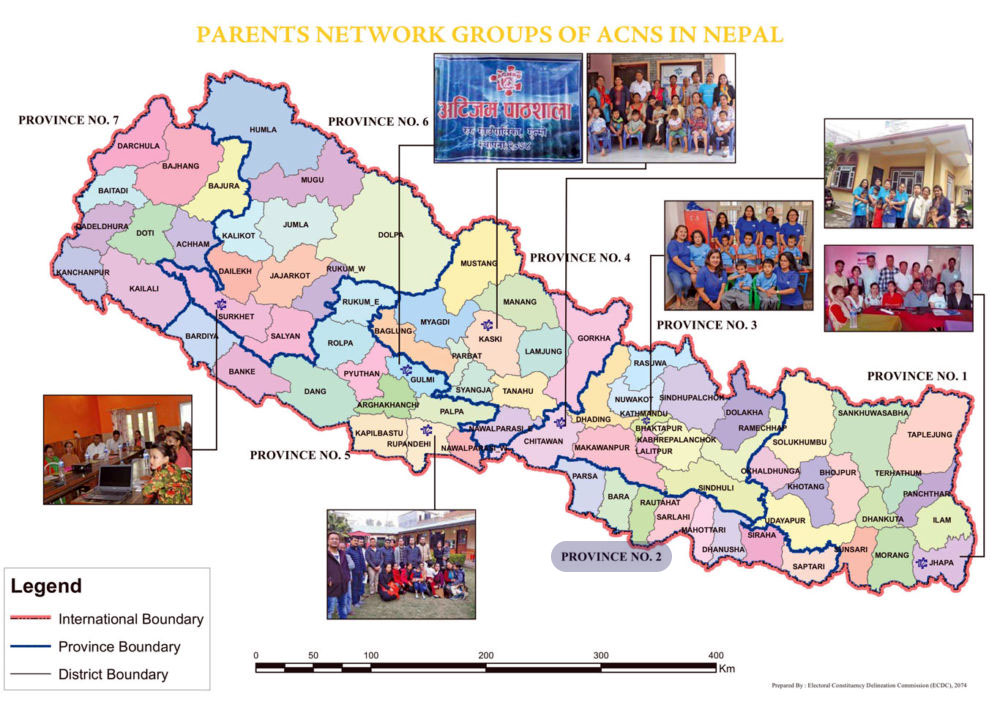It is never easy for parents to see their child go through any problem. Yet, for Sunita Maleku Amatya, finding that her 28-month child was autistic was not easy. Amatya is an anesthesiologist at Nepal Cancer Hospital and Research Centre, yet she says being a medical professional did not make her process to make peace with it any easier either. But, rather than waiting for help, she took the initiative to learn about autism and even opened a non-governmental organisation AutismCare Nepal Society (ACNS) in 2008 for other parents like her struggling with autism in Nepal.
Following this, she has been a key person in influencing the campaigns about autism in Nepal and in making autism among the 10 classified disabilities here. Talking with Onlinekhabar, Amatya shares her experiences and insights on what autism is, its status in Nepal and all things the country is yet to address. Excerpts:
What is the status of autism in Nepal? How do we see that changing in today’s scenario?
In the world, some 2 per cent of children are diagnosed with autism whereas according to the US government’s CDC, it is one in 54 children. We do not have the number, but there is a worrisome rate at which cases of autism in Nepal are being reported.
Post-Covid, the cases have increased and now, there are four to fives cases being diagnosed a day from just one healthcare clinic in Nepal. By the end of the month, there are more than 120 cases of children being suspected and diagnosed with the autism spectrum. The undiagnosed cases are still a variable.
But, given the increase in awareness levels among the people, the positive aspect is that the age of diagnosis among children has decreased from the earlier seven to eight years of age to one to three years. This is good because it is the ideal diagnosis time. Signs can be diagnosed in children as early as eight to nine months but they are easy to miss signs. By two years of age, a child’s regular development, reciprocal as well as social behaviour can be confirmed to be within the autistic spectrum or not.
The early diagnosis is also essential for the development of young children as their behaviour can be intercepted early with stimulation and behaviour therapy that helps the child to navigate through life. Parents and caregivers can facilitate them better as well, which will help them throughout their life. They might not be “cured” of autism but when they are given early intervention, they can be more independent and self-reliant, with minimal intervention from others.

How has the discussion around autism in Nepal changed in the past decade?
When we first started the ACNS, some 14 years ago, there was no awareness or no organisation even talking about autism in Nepal. Today, the scenario has changed and people know what autism is and that it is a spectrum disorder. There are many dialogues and organisations in the field, yet there are still many lapses that need to be addressed by all the stakeholders.
Compared to the time when my son was diagnosed, parents today have more information and places to seek help for autism in Nepal. My husband and I went to a Delhi-based autism centre to learn about it and did a three-month training. Today, the ACNS is providing the same training and a diploma course for parents too.
Also, parents now have understood that they need to speak and let others know if they do not want to be judged by society and comfort their children. There is a network of parents in various parts of Nepal that are initiating and promoting awareness of autism in Nepal.
What are some of the common misconceptions about autism in Nepal that people need to change?
Children within the autism spectrum indeed have cognitive differences, but that does not mean they are dumb or stupid. It is just that they have an uneven cognitive development that does not match their age; they learn differently than others. In fact, there are people with Asperger’s syndrome who have high functioning brain development.
They are good at specific tasks where they have a fixed set of work to do, in fact, even better, more productively and honestly. And, dialogues have started around the inclusion of autistic people in the workplace. We need to give them predictability cues to help them foster better communication flow.
Meanwhile, it is also not true that they cannot attend normal schools; my child is one example. But for that, we need more flexible schools that incorporate therapeutic sessions and have trained teachers. And regardless of their performance, parents and teachers should not put the same level of expectations of their brain functioning and academic results in school. We need to take a more individualistic approach.

What are the major problems that stakeholders working on autism in Nepal are facing?
The number one problem with autism in Nepal is the lack of skilled human resources as they need skills in multidisciplinary areas and therapy techniques. Though there are needs and opportunities, we have a more unmotivated younger generation who are unaware that they can make a career in this field.
Having said that, those who come for autism in Nepal are harder to sustain. For our organisation itself that has invested and trained the people, the human resources are lacking because we lack funds to pay them. We are still struggling to give services to those who need help today.
Another problem is a lack of discussion among the public and the normalisation of the dialogues within families. We also lack flexible schools and trained teachers that can facilitate the children.
What about the parents and caregivers? Are there enough dialogues about autism in Nepal among them?
Not at all, we have not even started to talk about it. When a child is diagnosed with autism in Nepal, it is the mother who becomes their primary caregiver, irrespective of their background. We are also not okay with leaving the child with somebody else either. So, it is more likely that the burden is more on the mother from taking care of the child to facing the judgements and social stigmas as well as taking care of other families and their needs or even putting the child over her career.
On top of all, they are struggling with their child’s condition and come to terms with it. They are more likely to develop anxiety, depression and social exclusion from friends, families and even partners. They need as much care as the child; only then can they give better care to the child. I was lucky that rather than leaving my job, I got a supportive family who helped me in taking care of our son every step of the way.
Recently, initiatives like Care for Carers have started dialogues around it. Our parent-child training programme has been an outlet for our stakeholders and also allows them to feel a level of empathy. But, we need a more constructive nationwide system.
What else is there that Nepal can do for autistic children?
Catering to 100 per cent of children and curing them is an unrealistic dream. Yet, we can curate a plan to make a separate package to cater to the different needs of people suffering from autism in Nepal. We need to design a nationwide early intervention and awareness system. Then, we need to make sure the children should be able to go to schools near them. Another major problem that has not been discussed is the number of orphaned autistic children.
For all this, local government units can emerge as the solution to the problems. Their roles are today limited to giving documents for ID cards. But, just having the budget and power is not enough; they need to be aware and have knowledge about what the locals need.




















